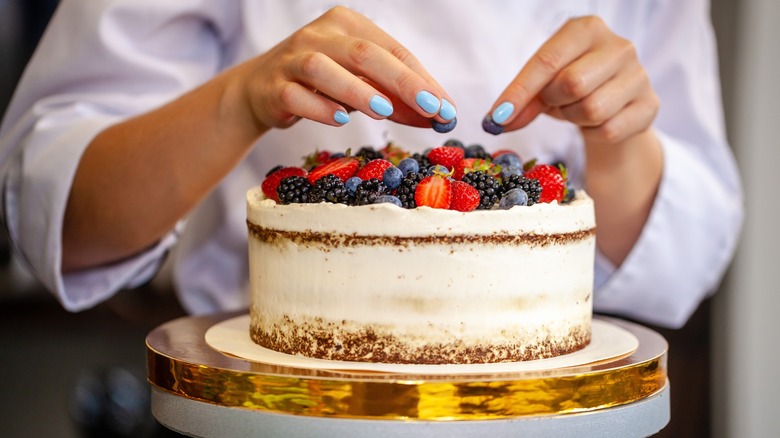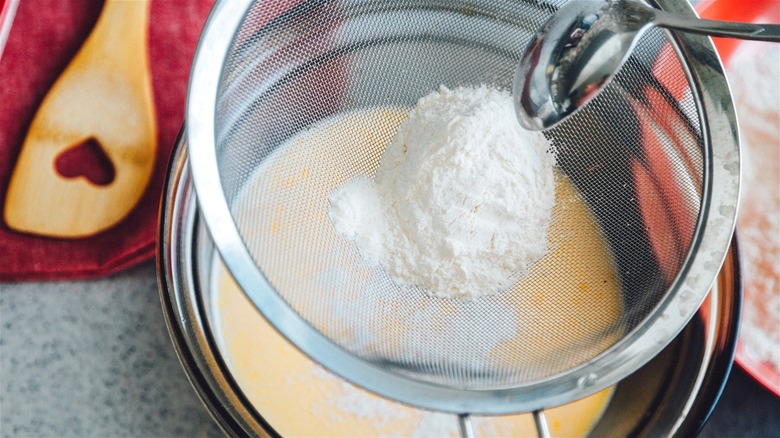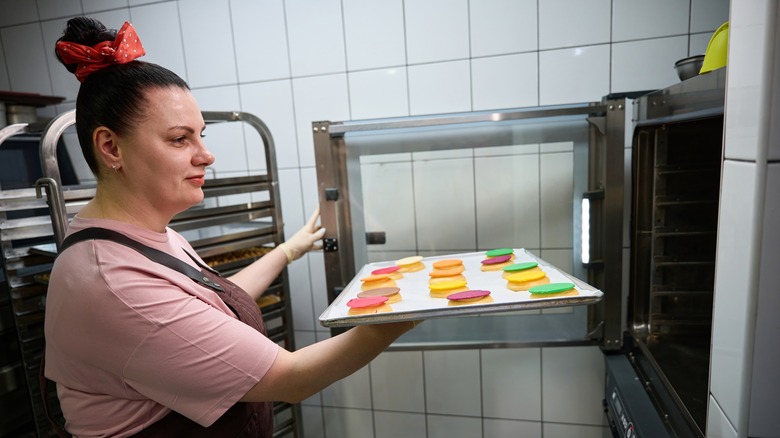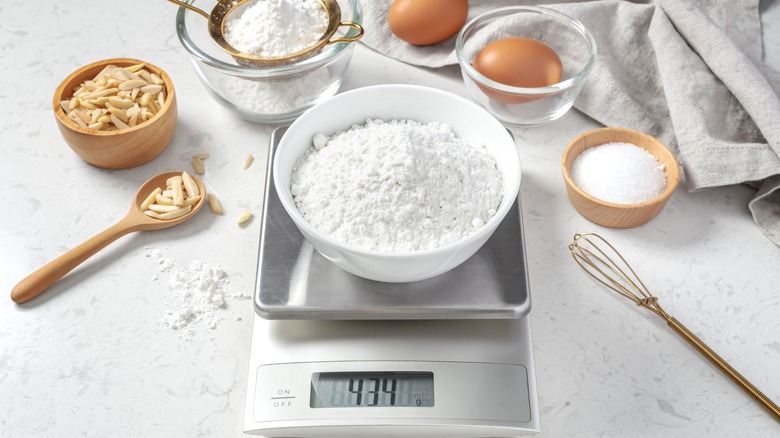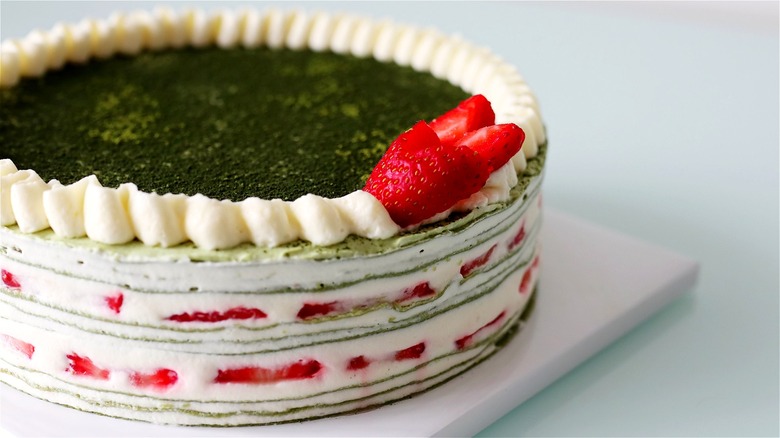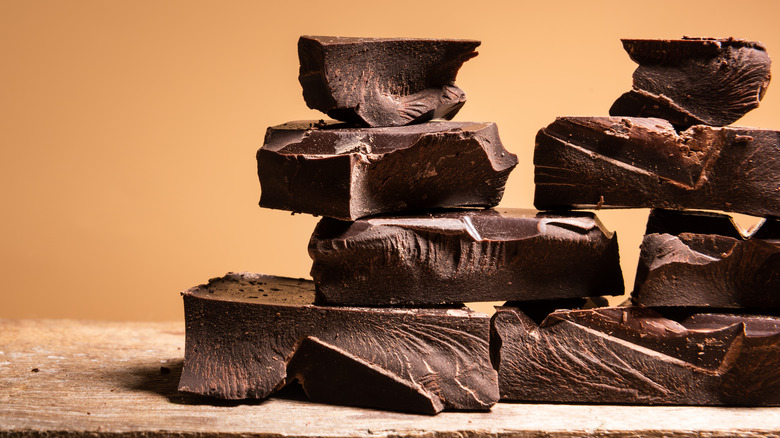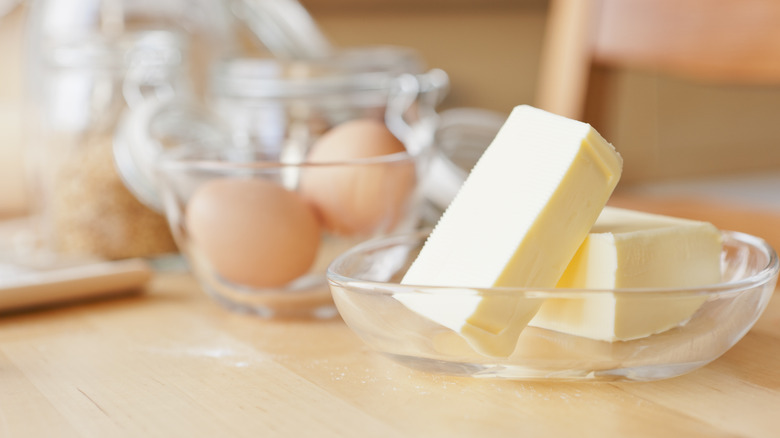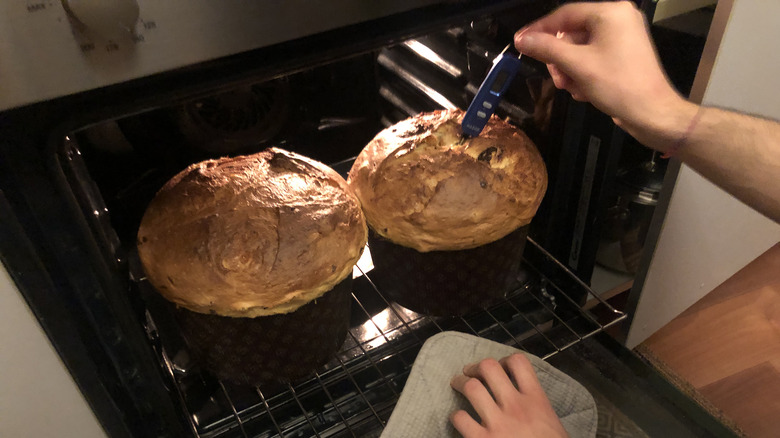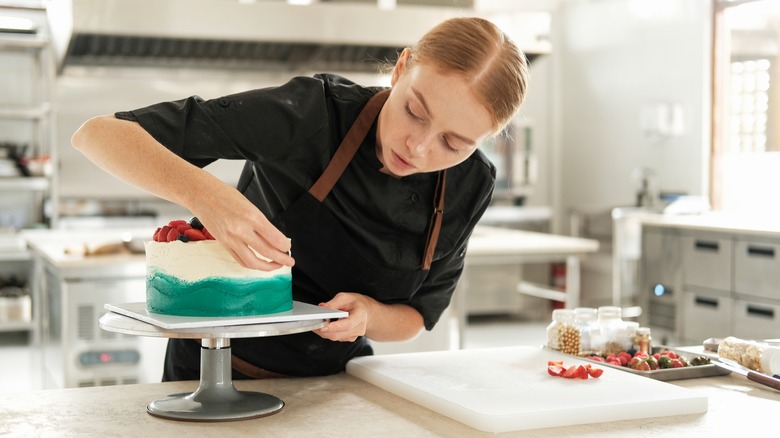Why Cake Always Tastes Better From A Bakery Vs At Home
Whether it is a génoise, Victoria, bundt, or other type, a well-baked cake is a thing of beauty. To those eating them, these cakes symbolize celebration and indulgence. For those making them, a great-tasting cake signifies a job well done. But just as there is nothing better than a good cake, there are few things worse than a bad one. Fortunately, the abundance of high quality bakeries in the country means that individuals need not go without excellent cake.
While many homemade cakes are delicious, it's nearly always true that those made at a bakery taste just that little bit better. In this article, I'll explain eight reasons as to why that is, providing you with tips that, while not completely transforming your baking, will greatly improve the quality of your home-baked cakes.
Before plunging into the article, I think it's important to note that I was by no means an instinctive baker. In fact, my early attempts to bake cakes, scones, and other tray-bakes resulted in the bin being fed — rather than paying customers. However, after working in the kitchens of several café-bakeries in both England and Scotland, my baking skills duly improved, and I now understand why professionally-made cakes taste better than those made at home.
Professional bakers often sift their flour
While somewhat of a contentious topic amongst bakers, I have always been taught to sift my flour when baking a cake. I was told there were two reasons for doing this. Firstly, sifting prevents clumps of flour — be that cake flour, almond flour, or any other type of flour — from ending up in the batter. Mixing usually breaks up these clumps, but sometimes they appear in the finished cake and ruin the eating experience. After all, a pile of unincorporated flour is no cake eater's idea of a nice surprise. Secondly, sifting flour also makes it easier to incorporate the flour into the batter. This reduces the amount of mixing that's required to bring the batter together, minimizing gluten development and resulting in a finished cake that boasts a lighter, more delicate texture.
Sifting flour also allows for more accurate measurements to be made. This mainly pertains to those bakers who are in the habit of measuring flour by volume. Thanks to a variety of factors, the density of flour can vary enormously, meaning the actual quantity of flour included when measured by volume changes every time, contributing to the creation of inconsistent and poorly executed cakes. By making the flour's density much more uniform, sifting negates this issue to a degree.
The ovens used by bakeries are superior
One of the main reasons why cakes made in bakeries taste better than those made at home is that the equipment professionals use is far superior. This is most obvious when it comes to ovens. Bakeries have high-grade ovens that boast accurate (often digitally controlled) temperatures. As a result, professional bakers know exactly what temperature their cake is baking at, while amateurs are often left with only a general idea. This enables professional bakers to make much more accurate estimations when it comes to baking times, reducing the chances of their cake becoming over-baked or under-baked.
Aside from being accurate, professional-grade ovens are also very good at distributing heat evenly. Because of this, cakes baked in professional kitchens are more uniform than those baked in home settings. This is of vital importance, as even small inconsistencies can lead to parts of a cake becoming under-cooked or burnt, ruining the flavor and appearance of an entire cake.
Buying a high-spec oven is not realistic for most home cooks, but steps can be taken to mitigate the effects of a subpar appliance, including the identification of an oven's hotspots. Once aware of where the hotspots are, bakers can position the cake to make the best use of or avoid them. As for inaccurate temperatures, home cooks can purchase digital oven thermometers that give accurate temperature readings, thus removing the ambiguity inherent in many residential ovens.
Professionals measure everything with kitchen scales
It's often said that cooking is an art, while baking is a science. While I don't completely agree with this statement, it is true that accuracy and replicability are at the heart of all great baking. This is especially true when baking cakes; even slight deviations from a trusted recipe can transform what would have been a delicious, moist cake into a dried-out, tasteless brick.
Due to the prevalence of measuring by volume in the United States, American bakers are more at risk than most of accidentally adding too much or too little of an ingredient to the batter, throwing off a cake's proportions, and dooming it to mediocrity. For example, a dense cup of flour can weigh up to 30% more than a sparse cup — a huge variance that makes producing a delicious and replicable cake extremely difficult.
Using a digital kitchen scale and measuring ingredients by weight completely negates this issue; 100 grams of flour is still 100 grams of flour no matter how densely compacted it has become. For this reason, all serious bakers measure just about every ingredient by weight. The only exception to this rule are ingredients — such as spices — which are used in such small quantities as to be undetectable by most kitchen scales. In these instances, feel free to bring out the measuring spoons, but for any other ingredient, you're much better off doing what the professionals do and measuring by weight.
Exciting flavor combinations are encouraged by bakeries
Home bakers often stick to the same old flavor combinations. This is for a good reason: pairings like chocolate and hazelnut or vanilla and buttercream are enduringly popular because they taste good. However, it's fair to say that cakes that spotlight these flavors have become somewhat mundane. It's for this reason that many professional bakers attempt to set their products apart by utilizing new flavor combinations, such as strawberry and matcha.
In the kitchens where I worked, we were encouraged to experiment with new flavor combinations, often testing them via a batch of muffins and then, if popular, using that flavor pairing to make a cake. While this was a daunting task at first, coming up with new flavor combinations was made easier once I learned that pairings often work best when two opposing flavors are used in conjunction with one another. For example, strawberry and matcha work well together, because the earthy flavor of the matcha is offset by the bright taste of strawberries. These novel, surprising combinations result in cakes that are far tastier than the run-of-the-mill pairings championed by most amateur bakers.
Businesses have access to high quality ingredients
Although often repeated, the following fact remains true: good food can only be made with high quality ingredients. When baking a cake, the quality of everything, from flour to chocolate, will have a direct impact on the finished product's texture, taste, and overall appeal. Professional bakers know this, and those serious about their craft make sure they're using exceptional ingredients. Most amateurs, it must be said, often make do with whatever their local grocery store stocks.
The impact good quality ingredients have on a cake is highlighted through flour. Bakers who use quality cake flour — which is lower in protein and higher in starch than most all-purpose flours — will produce cakes that are light, boast a finer crumb, and have a good rise. All of these characteristics ultimately translate into a more enjoyable eating experience. Even extremely talented home cooks who use poor quality flour will struggle to produce cakes of similar quality.
Chocolate is another ingredient where quality has an enormous impact. Counterintuitively, the best chocolate for cake-making isn't baking chocolate, but rather bars made for eating. Thanks to many brands using high quality ingredients to make their chocolate, these bars nearly always present more complex flavor profiles than their cheaper counterparts. What's more, high quality chocolate melts more evenly and has a far superior texture once liquid. This means it produces a far superior ganache — and ultimately a better-tasting cake — than poor quality chocolate.
Professional bakers use room temperature ingredients
One of the great advantages professional bakers have over amateurs is that they know in advance what and when they will be baking. This stands in contrast to many amateur bakers, who often decide to make something spur of the moment. Pre-planned baking means professionals can take certain steps to improve the process, namely, bringing cold ingredients up to room temperature.
The main benefit of using room temperature ingredients is that they are easier to emulsify than cold ingredients — as anyone who has attempted to cream cold butter can attest. Aside from being easier to emulsify, room temperature ingredients are also more effective at trapping air in the mixture. During baking, all this trapped air expands, producing a cake that is far lighter and more delicious than one made with cold ingredients.
It must be said that I'm not the best at planning ahead, and often thought I could make up for not bringing my ingredients to room temperature by mixing them with greater vigor. Predictably, all I managed to achieve was an over-mixed batter that formed the base of gummy and unpleasant cakes.
Thermometers are used to check doneness
Many amateur bakers pride themselves on knowing when a cake is done cooking; it is seen as a demonstration of skill to instinctively know when a cake is perfectly baked. Some bakers use the spring test, others visual cues alone. There are even those who listen to their cakes in an attempt to work out if they are fully cooked.
While experienced bakers get it right most of the time, there is always the chance that on one occasion, for whatever reason, they might get it wrong. The consequences of serving an over-baked or under-baked cake are simply too great for professional bakers to risk, so many opt to put their ego to one side and use a digital thermometer to see if the cake is done.
Temperatures in the vicinity of 210 degrees Fahrenheit are what I look for when deciding if my cake is baked properly. Once this temperature is reached, I look for other indicators that the cake is done, including whether or not the edges are pulling away from the tin, and if the top is well-browned. It is only then that I pull the cake from the oven.
Cakes are well-cooled prior to decorating
It's often said that we eat first with our eyes. Science backs this up; well-presented food has been shown to be perceived as better tasting by diners. Unfortunately, I will always be bad at presenting food. Thankfully, my colleagues gave me one simple tip to improve my cake decorating: cool the cake before decorating it.
Once well-cooled, there is almost zero chance that the frosting, or any other decoration, will melt, run, or slip off. What's more, cooled cakes are firmer, meaning that frosting is easier to spread and chunks of cake do not break away during the process. At one of the places where I worked, we often froze cakes before decorating them, making them even more robust. However, this isn't always the best idea for home cooks, as it means — due to food safety risks — that they cannot refreeze the cake at a later date.
